Exhibiting Robots Operated Using the Muscles of the Face at Maker Faire Kyoto 2024
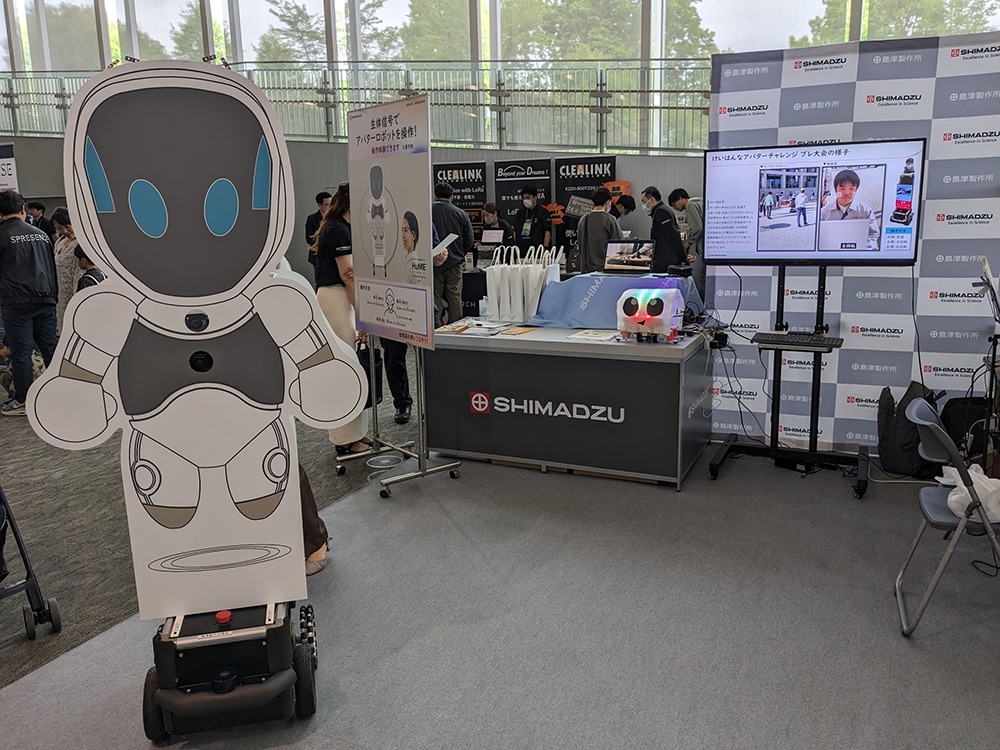
Eight young researchers from Shimadzu Corporation have banded together with the aim of creating a robot that can be operated easily anywhere and by anyone. They presented their efforts at Maker Faire Kyoto 2024. In what follows, we take a look behind the scenes at what they are doing.
- Maker Faire: A Festival for Those who Enjoy Making Things
- Exhibiting a Robot that can be Operated Just by Tensing the Facial Cheek Muscles
- Challenge Taken by Young Researchers with an Interest in Robots
- The Booth was a Huge Success! Children Entranced by the Movement
- Comment from Hara, the Production Team Leader
Maker Faire: A Festival for Those who Enjoy Making Things
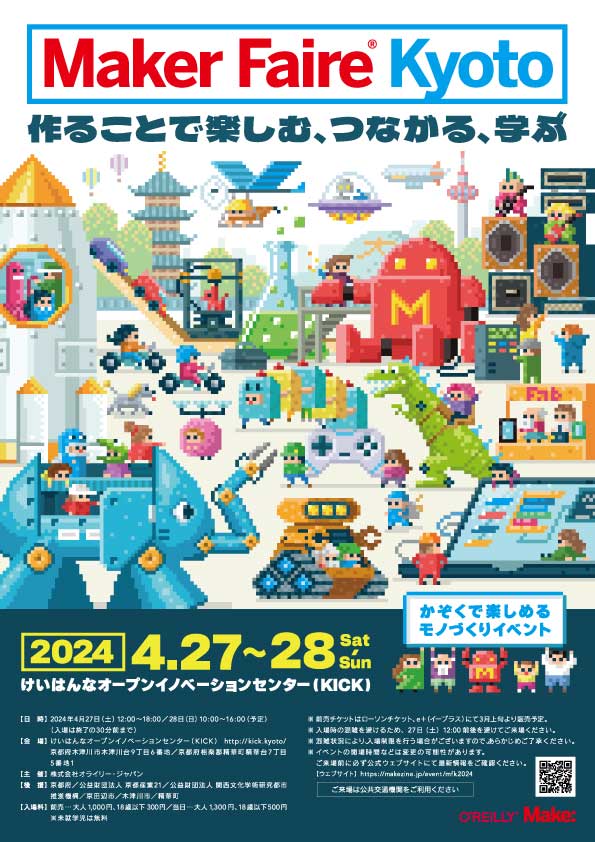
Maker Faire is an event that originated in San Francisco, California. This exhibition by people who enjoy making things, whether young or old, male or female, has been held in Tokyo, Rome, Paris, Shenzhen (China), and other places around the world.
In the spirit of just trying to give shape to whatever one is creating, without worrying about failure or extent of completeness, many instruments are displayed that use unique concepts or new technologies at the event.
Exhibiting a Robot that can be Operated Just by Tensing the Facial Cheek Muscles
“Would anybody like to try using Shimadzu technology to create a robot that can be operated easily anywhere and by anyone?” Kohei Hara, a young researcher who has been with Shimadzu for five years, raised his hand when this extraordinary proposal was made. He works at the Technology Research Laboratory (SHIMADZU Future Collaboratory at Keihanna) where Shimadzu’s key technologies are researched.
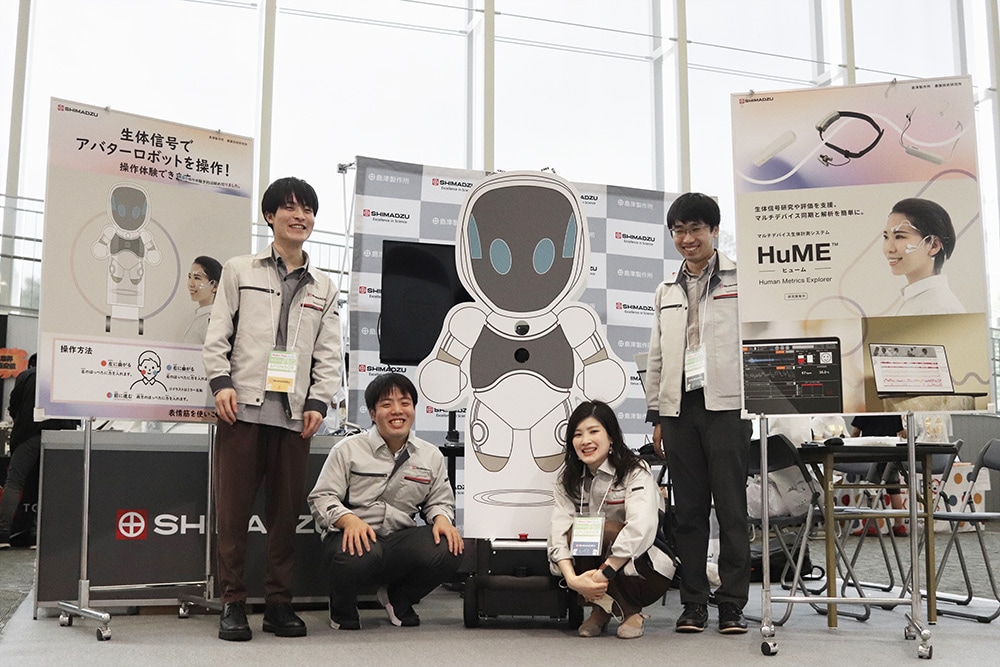
Kohei Hara at far left
“Back when I was a university student, I immersed myself in research on robots that could converse. That research involved training robots with normally hidden information on human nature and behavior, which allowed them to communicate very naturally.”
Thinking long and hard about the concept of how to make it easy to operate anywhere and by anyone, they came up with a robot that can be moved freely just by tensing the facial cheek muscles. Hara and the others on the production team created software that operates the robot by measuring myoelectric potentials (electrical potentials produced to move muscles) and determining from any changes in these values whether the muscles are being intentionally tensed. Tensing the facial muscles of the right cheek, makes the robot go right. Tense the left cheek, and it goes left. Smile and it goes forward. Keep a straight face, and it stops.
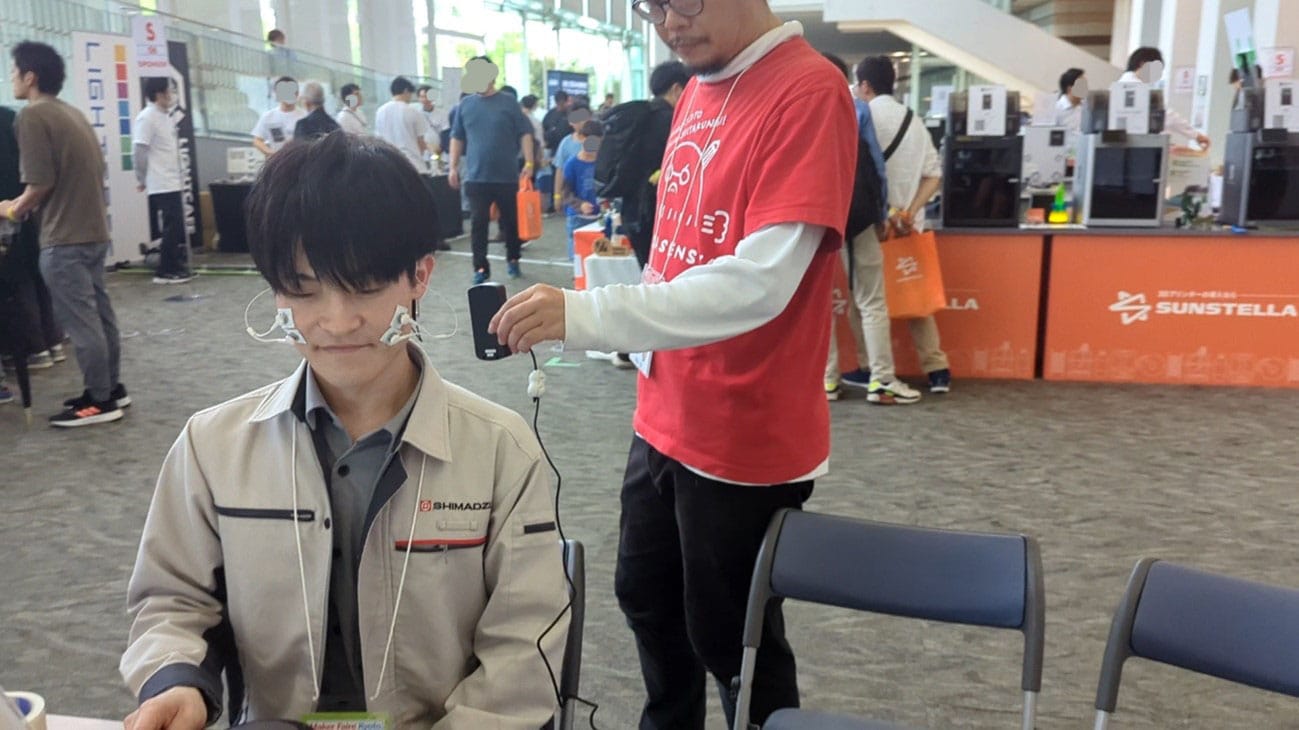
A device that measures myoelectric potentials is affixed to the face.
The underlying technology uses HuME, which is being studied at the Technology Research Laboratory. HuME, is a platform for creating Kansei values* based on the complex analysis of various biological signals. The facial expression myoelectric device is one of the constituent technologies of HuME.
Human psychological states such as joy, anger, pathos, and humor, as well as irritation, and focus present themselves as a variety of behaviors and biological signals including the softening of the facial cheek muscles, dilation of the pupils, and sweating. The objective is to analyze the inner life of people including the unconscious by digitizing and then analyzing these signals.
- *The term Kansei values refers to product and service values revealed by stimulating the senses of users or consumers, and then obtaining their impressions and responses.
Challenge Taken by Young Researchers with an Interest in Robots
Hara himself had developed and presented similar software before, but the production team designed all the robot’s operations. At Maker Faire Kyoto 2024, the public was welcome to jump in and try things, so it was necessary to ensure that anyone could immediately understand how to manipulate the robot, and that it was easy to operate.
“Ensuring that anyone could use the robot was the hardest thing, and the point that we labored over. Also, many of the participants were children, and so it was necessary to modify the presentation to ensure that they could use the robot intuitively and immediately. We put a lot of thought into the user interface (UI) that would convert the tensing of the facial cheek muscles into a waveform and display it.”
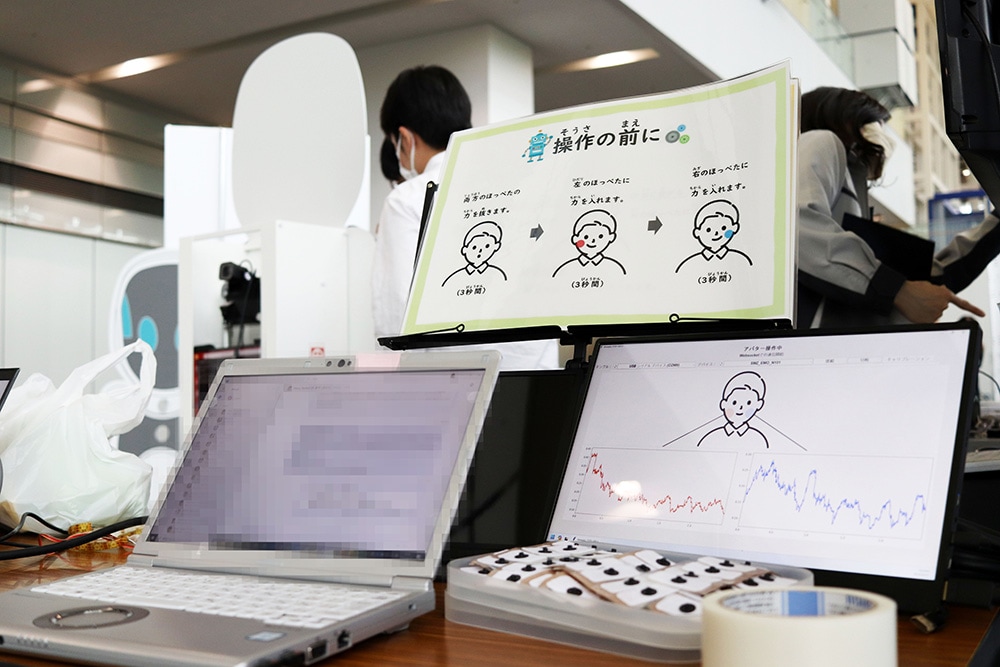
“The day before the event, while putting the exhibit together with the other members, we realized that it would be even clearer if there were lights on the left and right side of the robot’s head that lit up to show the direction of movement. So we hurriedly installed lights and rewrote the software.”
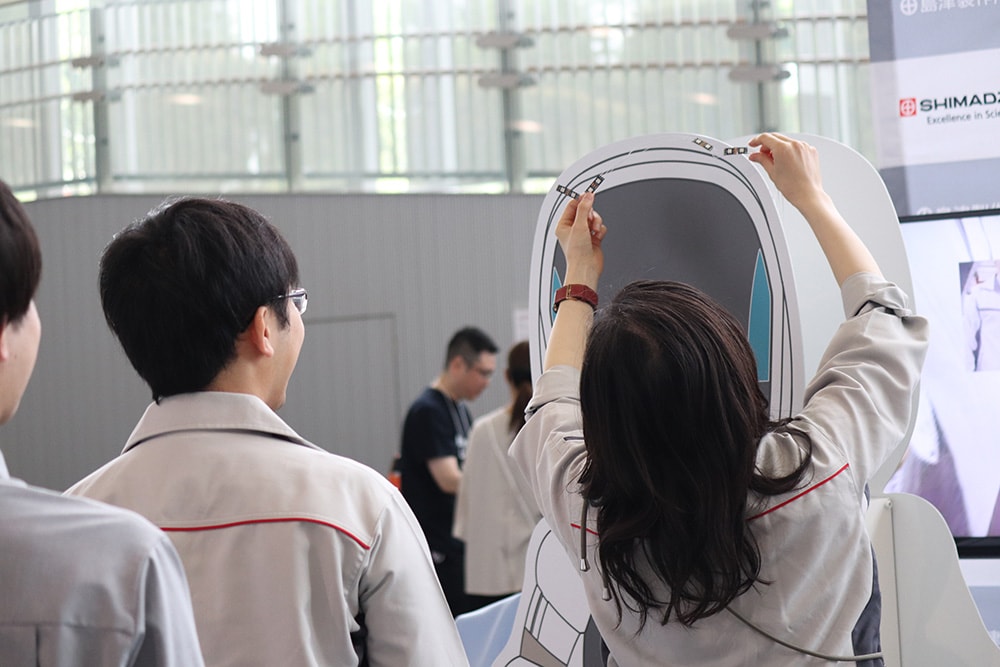
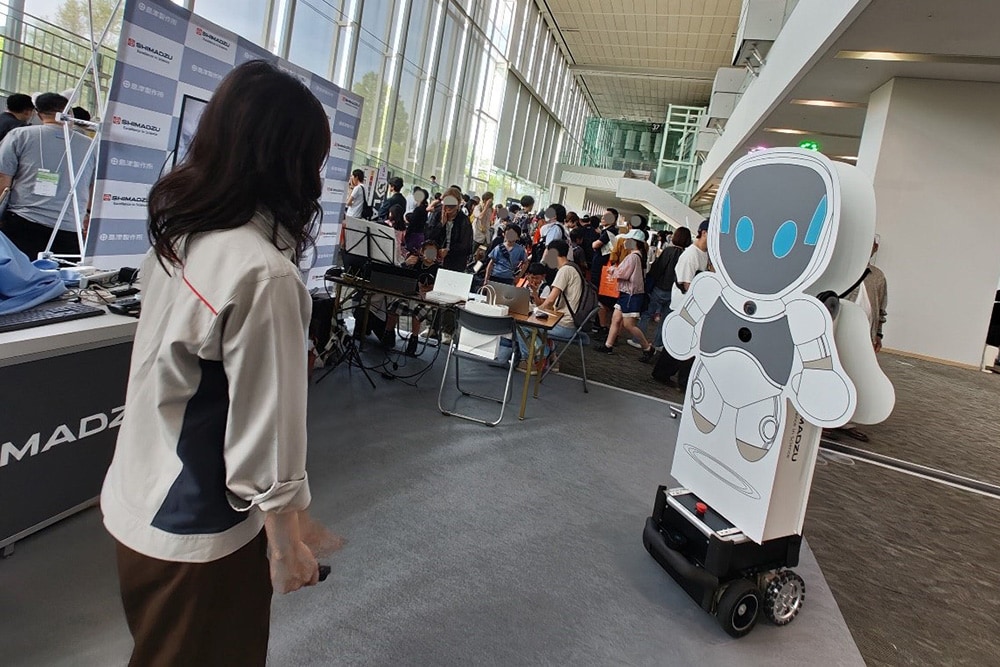
Just before the event, pink and green lights were added to the robot’s head.
The Booth was a Huge Success! Children Entranced by the Movement
The 30-minutes experience starts as soon as the device is affixed to the participant’s face. Many children participated.
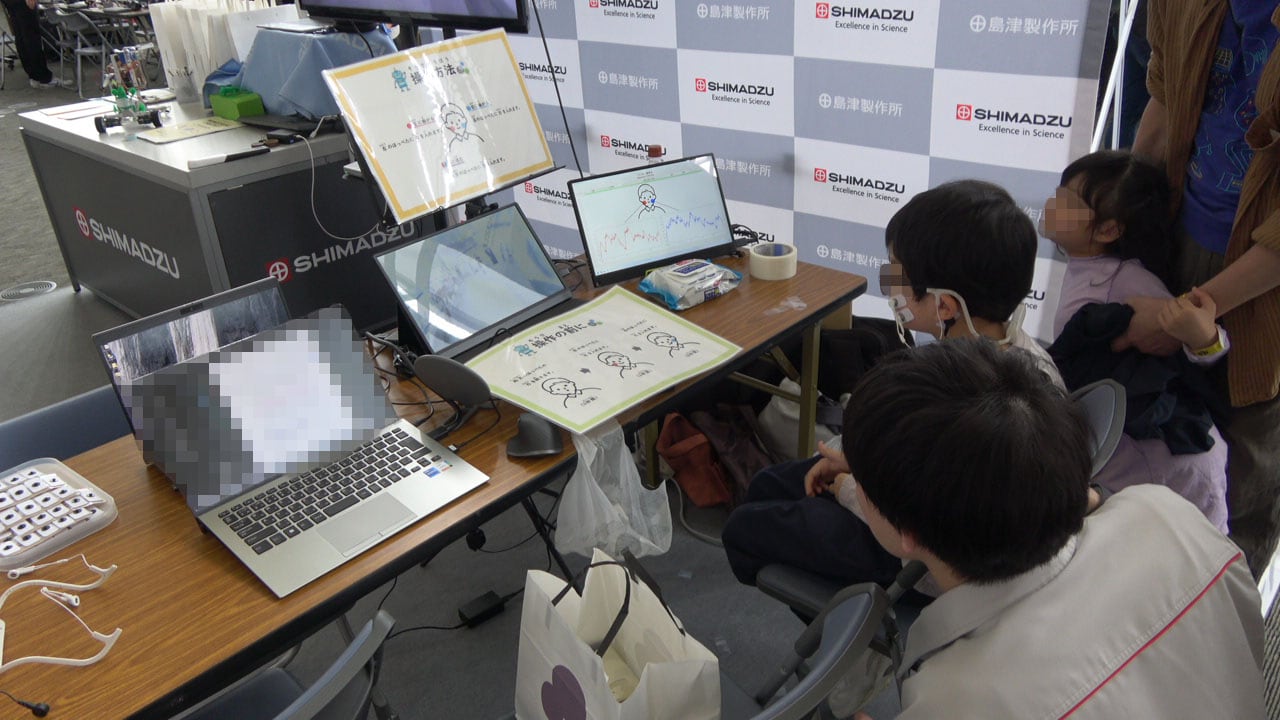
With a little advice such as “Try grinding your back teeth on the side you wish it to move towards” and “To tense both sides of your facial cheeks, try smiling,” even elementary school students were able to enjoy operating the robot.
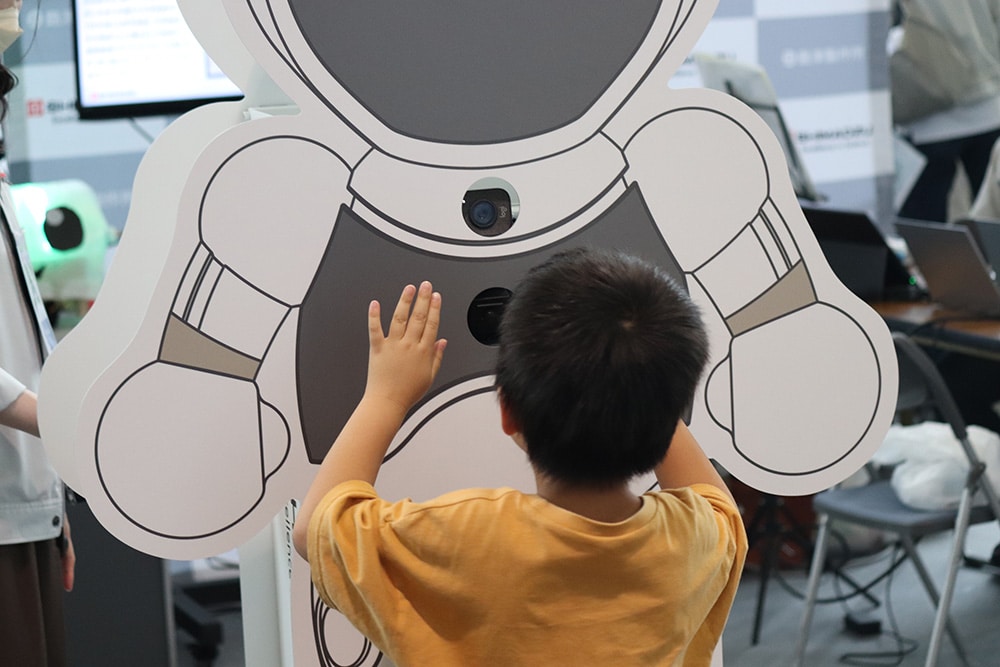
Comment from Hara, the Production Team Leader
Some of the participants appeared to be entranced by the experience, which I was really pleased to see. Learning for myself what it actually means to produce something that can be used easily anywhere and by anyone will likely be very useful in my subsequent research.
 Page Title and URL Copied.
Page Title and URL Copied.


